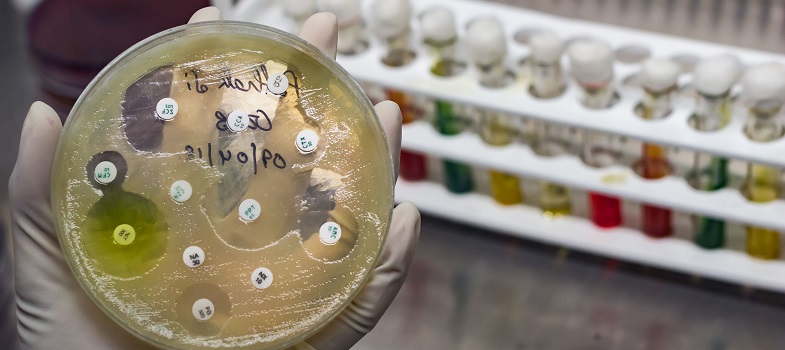Antimicrobial susceptibility testing
Introduction
Microbiology laboratories have an important role in tackling antimicrobial resistance (AMR), largely through routinely performed antimicrobial susceptibility testing (AST). AST is used to detect resistance in clinically important bacteria and provide information about which antibiotic therapeutic options will be effective against a given bacterial pathogen. Standardised AST data are also used to track the emergence and spread of antibiotic resistance in human and animal populations, and are an integral part of a
This module focuses on
It is also possible to use
After completing this module, you will be able to:
- describe the principles of AST
- understand the concepts of phenotypic methods for AST
- understand the process of disk diffusion testing and the relevant quality measures needed
- understand the principles of other phenotypic methods, including automated methods
- understand that the method used may depend on the organism being tested
- understand the concept of MICs and breakpoints
- recognise relevant international guidelines, and know where to find them and when to use them
- recognise that additional testing may be needed to identify/confirm resistance mechanisms
- recognise the importance of procedures designed to ensure the quality of AST testing in your workplace.
Activity 1: Assessing your skills and knowledge
Before you begin this module, you should take a moment to think about the learning outcomes and how confident you feel about your knowledge and skills in these areas. Do not worry if you do not feel very confident in some skills – they may be areas that you are hoping to develop by studying these modules.
Now use the interactive tool to rate your confidence in these areas using the following scale:
- 5 Very confident
- 4 Confident
- 3 Neither confident nor not confident
- 2 Not very confident
- 1 Not at all confident
This is for you to reflect on your own knowledge and skills you already have.



